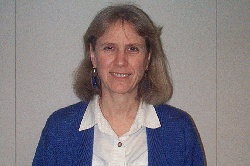| This was her story:
"My legs hurt all the time."
"Whereabouts in your legs?" I ask. Almost nothing causes global leg pain.
She puts her hands at the top of her thighs and sweeps them down to her calves. "Everywhere. I'm falling apart, Dr. Kullberg." She tears up.
"Not yet, I don't think. Let's figure out what's wrong. How about your knees?"
"It starts at my knees and goes up and down." Again she shows me with her hands. "It hurts to walk."
Now we're getting somewhere. At 42 years old, she's at that age when all sorts of things start to go wrong with the knees. "Does it hurt whenever you're up on your feet?"
"I can't walk anywhere. I didn't tell Lisa nothing about it." She starts to cry again.
Her husband died two years ago, suddenly and unexpectedly. Lisa, their fourteen-year-old daughter, watches her mom like a hawk. I try to reassure her about Lisa. I ask several more questions and examine her legs.
This is my story:
"I think you've got several things going on," I say. "You've got some bursitis here." I touch the bursa below her right knee. I explain what a bursitis is. I tell her what causes the pain beneath her kneecaps, how her varicose veins might make her legs ache and the possibility of early arthritis in her knees. We could Xray her knees, I tell her, and I could inject the bursae with cortisone. She's not so sure about that. Will it hurt? She asks. She doesn't want the Xrays either.
"I just want to know what's wrong," she says.
She ends up leaving with nothing more than a return appointment and a couple of suggestions on how to minimize the pain. No diagnostic exams, no therapeutic maneuvers, not even any pain meds. But she got what she needed: names for what was bothering her, reassurance that nothing serious was wrong, and, most important, the confidence to reassure her daughter.
 |
| Patricia Kullberg, MD, MPH |
 |
As a primary care physician, I do this a lot: I listen to stories, reinterpret them within a western scientific medical paradigm and feed them back to the storyteller. It's not just about the bursitis or the arthritis. No disease or disorder exists as a pure entity. Every patient constructs a story around her malady and invests it with meanings which are particular to her specific psychological, social, economic, and cultural circumstances and consistent with her own knowledge and beliefs. My job goes beyond making an accurate diagnosis and crafting a therapeutic plan. I try to figure out what those meanings are and build my explanations and recommendations around those meanings. The more congruent my story is with the patient's story, the more likely we'll achieve clinical success. This is not always easy.
This patient I know very well. We are of the same race, gender and nationality. She speaks English, she is literate and completed high school. She trusts me and tells me the most intimate details of her life. She is not delusional. Not many of my patients are such a perfect match for me I can divine their stories so easily.
I work in a government-funded, urban clinic, which serves a homeless, severely mentally ill, and substance abusing population. Many of my patients are mentally handicapped, demented, uneducated or illiterate, some too psychotic to answer basic questions or apprehend the simplest explanation. Quite a number come from Honduras, Kurdistan, Viet Nam, Ukraine or any other of a number of current or former battlefields and have lived lives wildly different from my own. They are of every imaginable culture and ethnicity. They are all impoverished and nearly all have been abused in one fashion or another.
Then there is my side of the equation, for I am not a neutral purveyor of scientific truth (the nature of scientific "truth" itself is way beyond the scope of this essay.) Things as mundane as the institution at which I trained or my particular experience with the specific condition at hand or as profound and complex as my own worldview, all shape my interpretation of my patient's story. Though I try to be cognizant of my own biases, some feelings or beliefs are too deeply buried.
Negotiating a shared understanding of my patients' problems sufficient to enable a successful therapeutic approach is, therefore, not a given. My patient above will likely return to me in a few weeks feeling much better, in part because I suggested to her she would. This time it will be simple.
Dr. Kullberg has written a short story, Cold Bones, centering on what happens when doctors and patients don't agree on the story.
|




